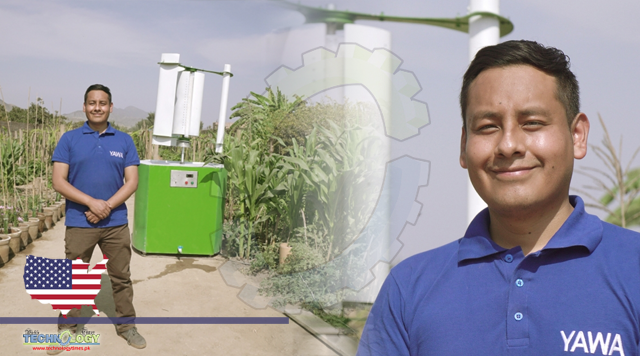Hidalgo was dispatched to school where his parents hoped he’d get a quality education, which was not available in his remote rural Peru village.

Turning Air Into Water In Rural Peru : When Max Hidalgo was 13 years old, his parents sent him away. Not as a punishment – even though the homesickness was sometimes so intense he could not bear it – but as a gift.
Hidalgo was dispatched to school where his parents hoped he’d get a quality education, which was not available in his remote rural Peru village.
“It was a massive sacrifice for my family but if it weren’t for that, I would never be where I am today,” said the 30-year-old biologist and inventor, who was honoured as one of the United Nations Environment Programme’s Young Champions of the Earth for 2020.
He is one of seven prize winners from around the world who will be given funding and mentorship to support their environmental initiatives.
Nature-inspired technology
A relentless tinkerer, Hidalgo has racked up award after award for his work, which uses nature as inspiration for technological innovations that change lives in the world’s poorest communities.
“I developed an electrical energy generator in the shape of a local flower, and a flowerpot that can charge cell phone batteries,” he said. “Now I am working on developing biodegradable packaging that’s hexagonal, like a beehive, so that it is sturdy but compact. Nature in itself is incredible. There is so much we can learn by observing it.”
His most heralded invention thus far turns the wind into water. Called Yawa after the Quechua words for water, yaku, and wind, waira, the technology uses a wind turbine to condense vapour from the air and generate water.
It costs about $70,000 for a system that can provide a village of 100 with water. The technology is much needed in Hidalgo’s native Peru, one of the countries in Latin America most at risk of a water crisis due to changing climate.
“There are communities that have been waiting for water for 20 years and rely on trucks that come in with expensive water of questionable quality,” he said. “We went to one town in southern Peru and the estimated cost of piped water for this community of 100 people was US$ 1 million!”
Circular Economy
The Yawa technology is an example of best practice in the circular economy. Materials used to build the turbine are recyclable and there is minimal plastic in the device.
The simple-to-use technology is even being modified to adapt to local air quality, a response to the challenges wrought by air pollution. But most importantly, the technology is something that can be used, owned and repaired by the communities it serves, even if they are not clear on the science behind it.
“When I was first testing this technology in different rural communities I spent a lot of time explaining the technical aspects of it, and the scientific processes behind it,” Hidalgo said. “At one point a woman stopped me and looked me in the eye and said, ‘Young man, I just want water’. And that shifted something inside of me, and I knew that I had to keep things simple.”
Hidalgo finds that getting out of the lab and into communities is critical for anyone seeking to use technology or innovation to produce bold environmental change.
“We have to listen to what communities want and respond to their needs. That is where the winds of creation take us,” he said, chortling at his own pun.
“Max Hidalgo exemplifies the type of ingenuity we need to enable communities to respond to the climate emergency we are in,” said Miriam Hinostroza, an environmental economist specialising on energy, climate and sustainable development at the United Nations Environment Programme (UNEP). “We need solutions, including those based on nature that are affordable and scalable so that low income communities can also become climate-resilient.”
Solving big problems doesn’t always require big technology, Hidalgo said. It requires creative ideas and big commitments. Don’t ever stop believing in your own ideas because you can change history.”
Originally published at UN environment